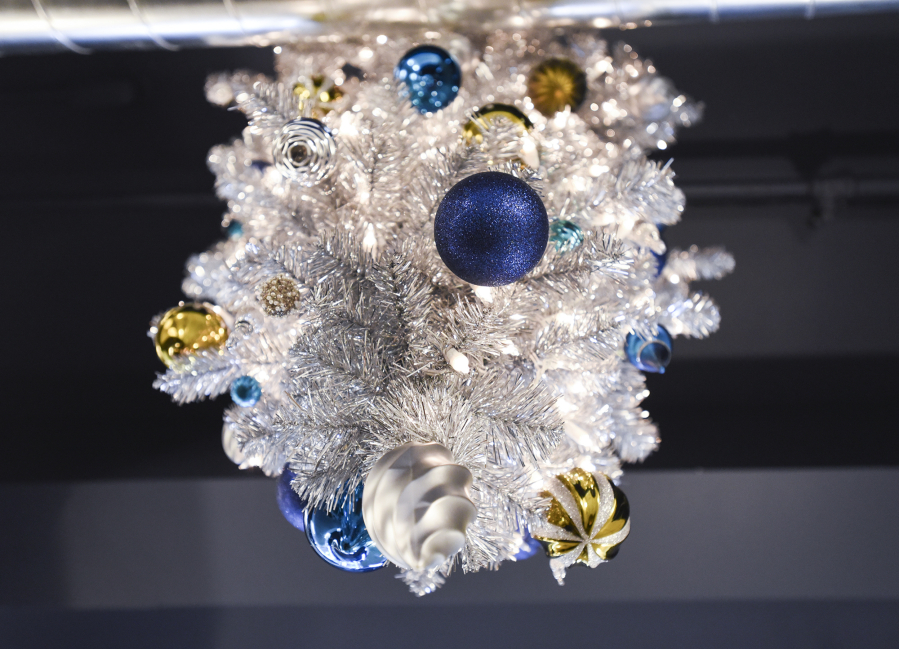Flipping Christmas upside down has been a pretty hot retail trend in recent years. Turns out, it was a pretty hot trend nearly a thousand years ago, too.
When Grant Whitney, the owner of the new Studio V hair salon in Felida, was getting ready to launch his business in May, his interior designer sized up the place’s high ceiling and offered a fun idea: When the holiday season approaches, why not dangle an inverted Christmas tree up there?
Whitney’s reaction: A what? “I guess that’s a thing. I’d never seen one,” he said.
He quickly learned that upside-down Christmas trees have been growing in popularity since the turn of the century — especially in stores and showrooms where sales space is at a premium. A wide-shouldered tree that’s balanced on one little toe doesn’t just grab the eye and tickle the curiosity, it also leaves more square footage open on the floor.
All sorts of upside-down trees are available via all sorts of sellers. Wal-Mart’s most affordable, an unadorned 3-foot artificial “tear drop,” goes for $35 and you can dangle it over a door; the Hammacher Schlemmer clearinghouse of conspicuous consumption offers a 7-foot upside-down tree featuring “3,700 lifelike PVC branch tips that are carefully pre-strung with 800 bright clear commercial-grade lights.” It goes for $600. The $65 base is extra.
The small tree Whitney settled on is supposed to stand in a base, but he had a better idea: He lopped off the base attachment and hot-glued a big light to the point at the top — that is, the bottom. And he affixed the tree to an exposed pipe up near the ceiling of the back room where you go to get shampooed.
“People will walk right under it without noticing it,” Whitney said. But settle back and position your neck on the lip of the shampoo basin, and you’re looking right up at this silver spectacle with blue and gold ornaments that’s almost floating around like a Christmas cloud.
“It’s the perfect spot. It’s like looking up at this beautiful chandelier. Sometimes there’s an audible gasp,” he said. “The reactions have been really fun.”
Inverted history
The history of the Christmas tree begins well over 1,000 years ago. But the story of the upside-down version is much murkier. Hunt around online and you’ll find that many sources simply recycle one another’s stories.
The overall Christmas tree tradition probably starts with tree worship in ancient times all around the world; in Europe this practice survived the arrival of Christianity and blended right in.
But folk legend has it that in eighth century Germany, St. Boniface declared war on one gigantic “Oak of Jupiter” that still attracted pagan worship, and cut it down to build a new church; springing up in its place was a miraculous evergreen — its triangular shape symbolizing the Trinity and pointing to Heaven.
By the 12th century, another layer of symbolism turned the triangular tree on its head: upside-down, it resembles a crucifix. Plus, it’s an eye-grabbing chandelier for your favorite banquet hall or throne room. No castle should be without one. Upside-down trees came to dangle from ceilings all over the regions that became modern Germany, Poland and Eastern Europe.
When modern Christmas and its modern tree took hold there and elsewhere around the world in the 1800s, nearly all trees turned right-side-up again.
It’s only in recent years that upside-down trees have returned — pretty much as a marketing fad.
“For me it’s decor,” Whitney said. “I just thought it was an arty thing to do.”




